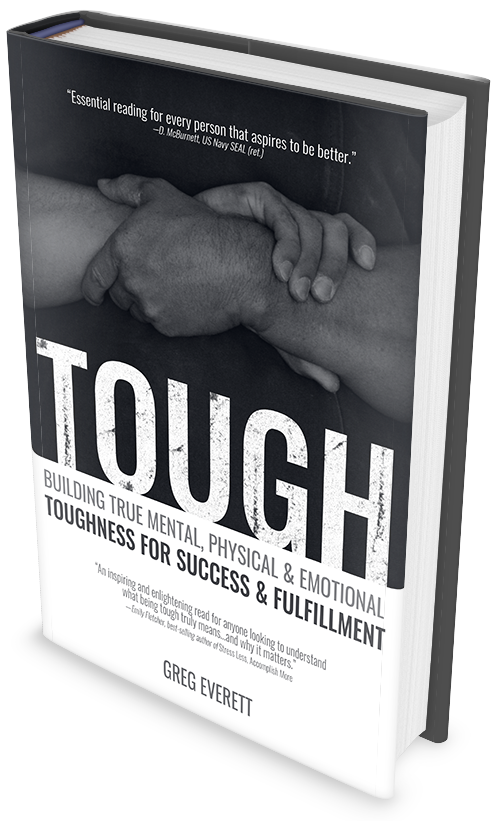What are you able to withstand? The ability to cope with stress, adversity, danger and the unpredictable is an obvious part of being tough, but how do we develop that ability to its ultimate potential? How much is capacity inherent, how much is a product of circumstance, and how much can be intentionally and systematically built? How are physical and mental capacity related, and how much do we rely on each?
Capacity may be the trait most commonly associated with toughness, and for good reason—this is what we see as the resilience and fortitude to endure extraordinary struggle, especially with more protracted experiences, and to succeed despite stacked odds. We tend to focus on and glorify the most extreme examples—surviving for weeks at sea in a life raft, making it back down a mountain after a fall and loss of equipment in a blizzard, escaping certain death in an attack—and forget that capacity is built and demonstrated at infinite levels of intensity and duration, and through experiences of myriad natures.
Most of us recognize that adversity tends to make people tough, but we often forget that it’s by no means a reliable or simple process. We pay attention to individuals who survive adversity and as a result have incredible stories to tell, and neglect to consider the vast number of people who endured the same or similar experiences and were destroyed in one way or another—perishing, quitting, or shattering psychologically, never even recovering to their previous conditions, let alone thriving.
Adversity isn’t a magical process that invariably absorbs soft, delicate children and spits out hardened, tough bastards from the other end—it can just as easily break us and turn us into fragile cowards who find every way possible to avoid risk or potential danger. Who we are before these trials, and how we consequently experience them, how we choose to view them, and how we manage to use them to a great extent determines how they affect us and influence our lives, character and future choices and success. We must choose to harness the power of adversity and put it to work for our benefit, and in order to do that most effectively, we need to be as well-prepared as possible, mentally and physically, prior to our most difficult and trying moments.
Much like the development of character is an ongoing process throughout our lives, the building of continuously increasing capacity should be an indefinite project. There are no tricks to instantaneously transform yourself other than self-delusion—and unfortunately, that’s arguably the most dangerous threat to toughness. The procedure of improving capacity follows the same basic structure as capability. We resolve to pursue greater capacity, and to that end, we create and implement methods of achieving it that we actively embed into our lifestyle. This isn’t some extracurricular activity we haphazardly tack on every now and then when we happen to think of it the occasional Sunday we have a bit of free time between laundry and lawn care—it’s a defining trait of our character and an inextricably vital element of our lives.
Preparation to more successfully and productively handle adversity isn’t mindless self-torture—we’re not arbitrarily creating discomfort, pain, fear or stress. I can hit myself over the head with a hammer and be pretty miserable, but I struggle to see the potential for any meaningful lesson from the experience, other than that choosing to hit myself with a hammer was a stupid idea.
Steeling ourselves in preparation for adversity, both mental and physical, doesn’t mean hurting ourselves unnecessarily or simply testing our current abilities unproductively. Preparation is training, not self-destruction; it’s systematic and sensible stress inoculation, not pointless misery. This training includes everything from simple, easy daily tasks and habit building, to periodic significant challenges to continually immunize ourselves against fear, anxiety and intimidation. There must be a well-defined purpose, an effective methodology, and a logical rationale. We’re building an electrical circuit to power a machine with an explicit purpose, not clipping a car battery to our eyelids out of senseless curiosity.
A significant piece of this process is the evolution of our mindset—learning to embrace and even seek challenge rather than avoid it, and to consciously determine and control our reactions and attitude in any circumstances. This evolving mindset is in part a direct, independent process, and in part a natural effect of our interdependent work with regard to our character, capacity and commitment. We become physically and mentally capable of not simply handling adversity and surviving, but of learning from it and thriving in its wake.

